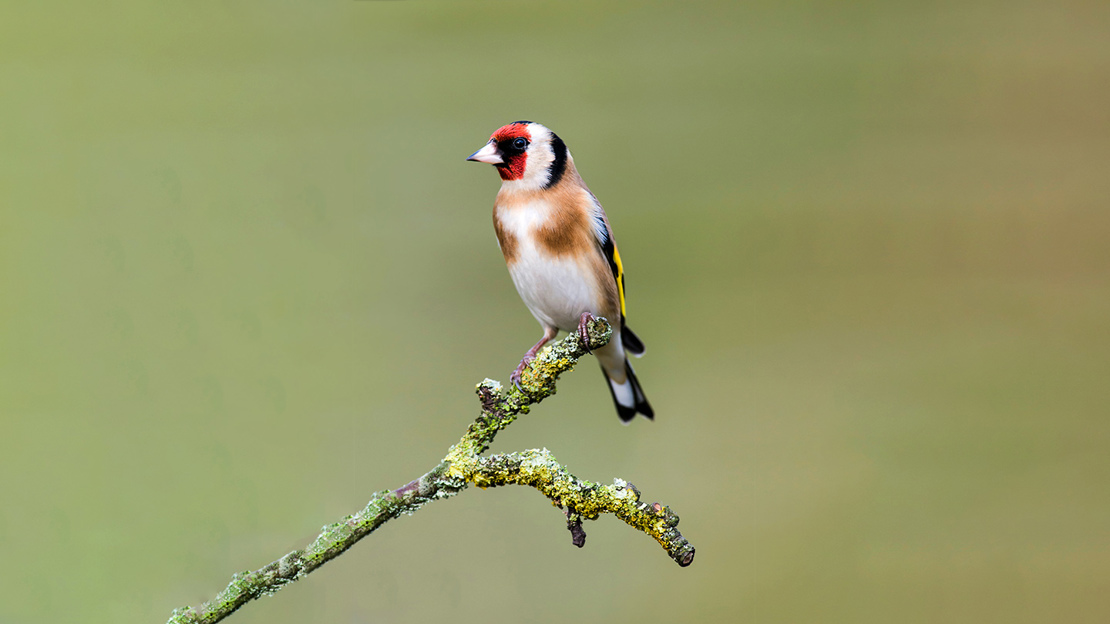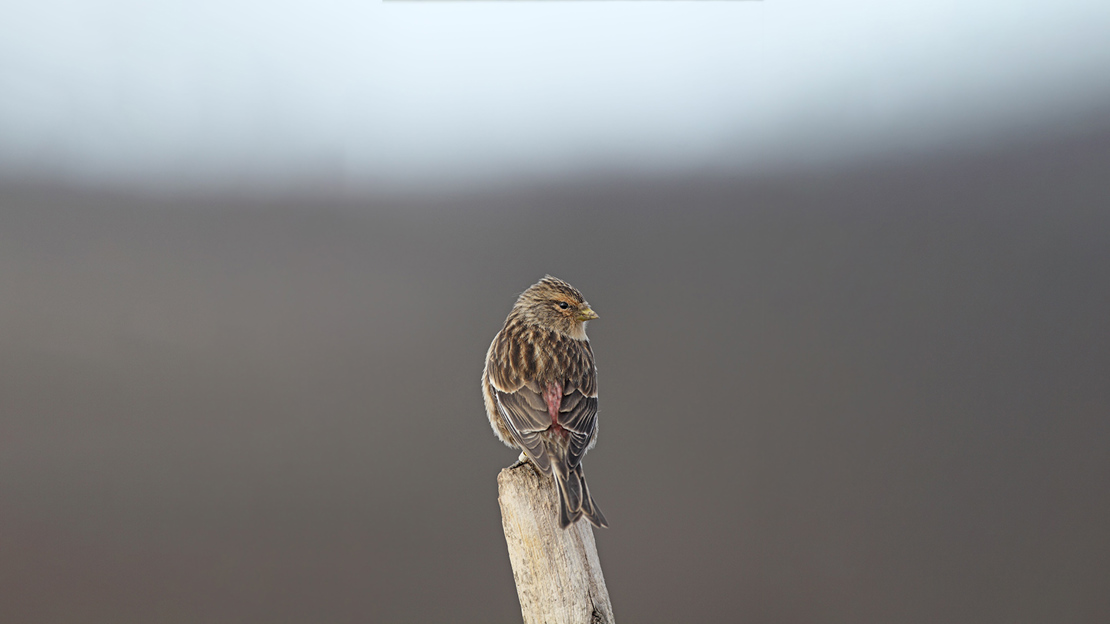Identify woodland birds on the go
Keep our pocket-sized identification guide to hand on your next walk.
Buy yours now
Content manager
Some are garden regulars, and others are elusive woodland dwellers. They also come in a stunning array of bright colours and beak shapes. How many of the UK's finches can you identify?
Male: slate grey head, orange cheeks and breast, white wing bars and silver bill in summer.
Female: buff brown tones all over with white wing bars.
Juvenile: similar colouring to the female.
Common across the UK and a regular visitor to gardens.
Find out more about the chaffinch.
Male: yellow-green all over with bright yellow wing and tail edges.
Female: dull grey-brown all over with yellow wing and tail edges.
Juvenile: similar colours to the female but with a streaky breast and back.
Common across the UK and a regular garden visitor, although populations have been hit by the disease trichomoniasis.
Male: yellow cheeks and breast, delicate bill, black cap and bib, and black and yellow wing bars.
Female: duller yellow head and back, black and yellow wing bars and streaky breast and belly.
Juvenile: streaky head, back, belly and breast with pale yellow wing bars.
Prefers conifer woodland but also a visitor to gardens, particularly in years of poor spruce seed crops.
Find out more about the siskin.

Male and female: slender, pale bill; red, white and black face; brown back and breast; and black wings with bright yellow bars.
Juvenile: brown and streaky head, back and breast, with black wings and yellow wing bars.
Common across the UK and a regular visitor to gardens.
Find out more about the goldfinch.
Keep our pocket-sized identification guide to hand on your next walk.
Buy yours nowMale: characteristic thick neck, bright pink breast, slate grey back, black cap and stubby bill, and a bright white rump which is particularly noticeable in flight.
Female: as the male, but with buff brown breast and dull brown back.
Juvenile: similar in colour to the female but without the black cap and bill.
Found in pairs or small groups across the UK in woodland and sometimes large gardens.
Find out more about the bullfinch.
Male: grey-blue head, warm orange breast, white belly and rump, and dark wings with orange bars.
Female: much as the male but with duller orange breast and buff brown head.
Juvenile: similar to the female although rarely seen in the UK.
Found in varying numbers across the UK in autumn and winter, particularly in beech woodlands in eastern England.
Find out more about the brambling.
Male: heavy silver bill with black mask, orange-brown head, grey neck and dark brown back. Wings are blue-black and brown with a white bar.
Female: similar patterning to the male but duller colours.
Juvenile: lacks the dark eye mask and has a speckled belly.
Scarce, preferring hornbeam woodland.
Male: streaky brown all over with a red forehead, black bib, small yellow bill and sometimes a pinky red breast in summer.
Female: similar to the male but without the pink flush to the breast.
Juvenile: similar to the female but without the red forehead.
Found mainly in birch or alder woodland.
Male: grey head, dark brown back and lighter brown belly with a pinky red forehead and breast.
Female: much duller than the male with a streaky pale belly and breast and lacking any red.
Juvenile: similar to the female but with a browner head.
Widespread across the UK on lowland farmland.

Male: streaky dark brown all over with a stubby bill, forked tail and pink rump in summer.
Female: similar to the male but with a brown rump.
Juvenile: similar to the female.
Breed in the upland areas of Scotland, the Pennines and North Wales, the Scottish islands and coastal parts of Northern Ireland. In winter they can also be found further afield around the eastern and northern coasts of the UK.
Male: rosy red head, breast and belly, dark grey wings and characteristic crossed bill.
Female: grey-green head, breast and belly, dark grey wings and crossed bill.
Juvenile: grey-brown and streaky all over.
Conifer woodland across most of the UK, often feeding high in the canopy. The genetically distinct Scottish crossbill (Loxia scottia) is very difficult to tell apart but is found only in the Caledonian pine forests of Scotland. It is also the only bird in the UK to be found here and nowhere else.
Find out more about the common crossbill.
Buy feeders, nest boxes and more from our online shop.
Visit the shop now